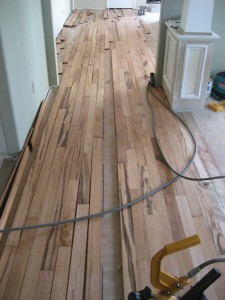 They have weird names that are hard to pronounce. They come from countries you didn’t know existed (let’s face it – you didn’t). Everyone hates working with them: you, your nailers, your saw blades, even your finish! Yes, I’m talking about exotic woods. In our trade we are familiar with names like Brazilian Cherry, I’pe, and Padauk which are more readily available. Some woods are so rare and expensive they are sold by weight like Cocobolo (see it in my last video about wood anatomy) and Lignum Vitae. You can find those at your local hardwood lumber store.
They have weird names that are hard to pronounce. They come from countries you didn’t know existed (let’s face it – you didn’t). Everyone hates working with them: you, your nailers, your saw blades, even your finish! Yes, I’m talking about exotic woods. In our trade we are familiar with names like Brazilian Cherry, I’pe, and Padauk which are more readily available. Some woods are so rare and expensive they are sold by weight like Cocobolo (see it in my last video about wood anatomy) and Lignum Vitae. You can find those at your local hardwood lumber store.
My first experience with Ipe was not good. My fasteners kept bending or breaking, my carbide blade on my miter saw was dull after a day and one of my employees had an allergic reaction to the dust. Exotic woods have become a part of every installer’s life. When I say exotics I refer to woods that are extremely dense, hard and rich in oils, silica or resins.
So, how working with exotics is different from working with let’s say Oak? Well, first thing is first right? I mean after safety. Acclimation and preparation: Your average oak will gain or lose a moisture point in a week. Not your average exotic. One of the former technical directors with the Nwfa told me a story about a museum installation of Ipe he had to do. He had acclimated the wood on site for two months before he was “forced” to install it. And still the wood was not where he wanted it to be. My point is that exotics (or any other hard and dense wood or strand woven grass) will need to be on site under estimated future living conditions for weeks at a minimum.
Next – installing: Cutting and nailing that exotic wood. You should use a cleat nailer to fasten exotic floors because your average ½” (1.3 cm) crown staple will split the tongue. This will create movement related issues with the floor. Some manufacturers make an 18 gauge cleat nailers (instead of 16) which are specifically designed for fastening hard and dense woods. If you are not used to spending $60 to $80 on a miter saw blade now is the time. The resins and silica in those woods will dull your blade quickly anyway, you might as well start with a quality blade (if you are a craftsman in my book you already have at least $600 worth of blades anyway, at least).
All of your power tools should be professional grade (and I don’t mean it looks professional, I mean professional). Trying to rip an Ipe’ board on a $100 table saw will be unsafe, slow and maybe impossible.
If you need to face or hand nail in some places pre drill your floor boards. You will find that pushing the drill through the wood is going to heat up your drill bit and break it. I learnt the hard way to let the bit do its’ job slowly, much like drilling into metal. If you attempt to face nail without pre drilling your nail will bend. Either way, trying to get a bent fastener out of a Cumaru board for example is an impossible task.
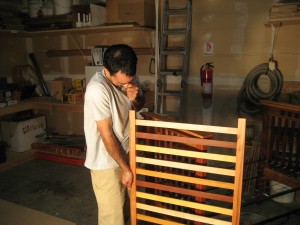 Sanding and finishing: here is a dilemma = I should start with a 36 grit because this is a really hard wood but, because it is such a hard wood how in the world am going to take those scratches out? Well, you are right. Better to start with 50 or 60 and change your abrasive frequently instead of starting with 36 or 40. Trying to get scratches out of Ipe’ is like trying to…well…let’s not even go there.
Sanding and finishing: here is a dilemma = I should start with a 36 grit because this is a really hard wood but, because it is such a hard wood how in the world am going to take those scratches out? Well, you are right. Better to start with 50 or 60 and change your abrasive frequently instead of starting with 36 or 40. Trying to get scratches out of Ipe’ is like trying to…well…let’s not even go there.
Finishing – First rule – no oil modified finishes. Second rule – seal it the day you are done sanding.
There’s much more to be said about exotics. I will probably dedicate some blog posts in the future about specific woods. Thank you for reading and as usual, I hope I helped someone, somewhere somehow.
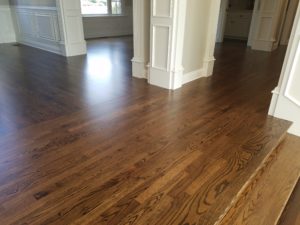 Wood dust is not something our bodies can process. Wood dust is one of the more common causes of health problems especially lung related conditions.
Wood dust is not something our bodies can process. Wood dust is one of the more common causes of health problems especially lung related conditions.

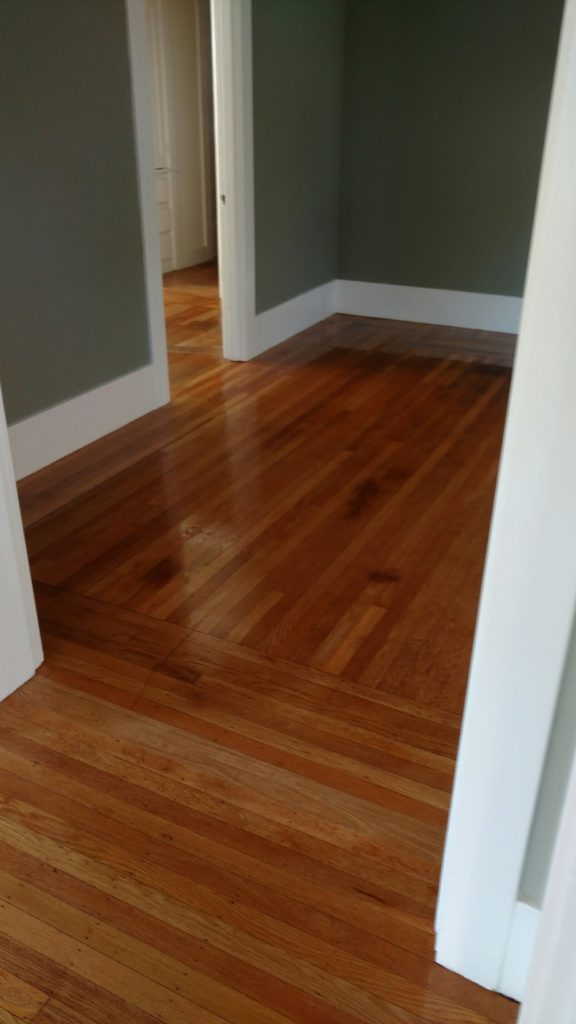 How to use and maintain your wood floors living with dogs and cats in the home.
How to use and maintain your wood floors living with dogs and cats in the home.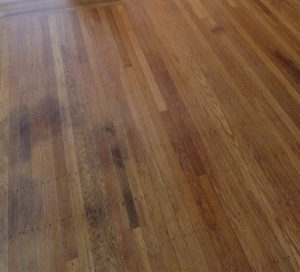 Many of us have dogs or cats as part of our family, and as such we let them inside the house on the hardwood floors. Dogs and cats will walk, run and play on the wood floors and much like us humans will cause some damages over the years. Normal use of our wood floors will eventually cause loss of sheen, scratches, dents, stains and discoloration. Having pets in the house often causes early wear and tear and/or excessive scratches. This leads me to guide you through choosing and using your new wood floors.
Many of us have dogs or cats as part of our family, and as such we let them inside the house on the hardwood floors. Dogs and cats will walk, run and play on the wood floors and much like us humans will cause some damages over the years. Normal use of our wood floors will eventually cause loss of sheen, scratches, dents, stains and discoloration. Having pets in the house often causes early wear and tear and/or excessive scratches. This leads me to guide you through choosing and using your new wood floors.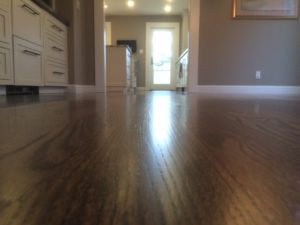
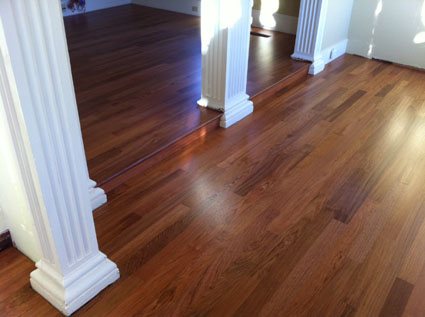
 They have weird names that are hard to pronounce. They come from countries you didn’t know existed (let’s face it – you didn’t). Everyone hates working with them: you, your nailers, your saw blades, even your finish! Yes, I’m talking about exotic woods. In our trade we are familiar with names like Brazilian Cherry, I’pe, and Padauk which are more readily available. Some woods are so rare and expensive they are sold by weight like Cocobolo (
They have weird names that are hard to pronounce. They come from countries you didn’t know existed (let’s face it – you didn’t). Everyone hates working with them: you, your nailers, your saw blades, even your finish! Yes, I’m talking about exotic woods. In our trade we are familiar with names like Brazilian Cherry, I’pe, and Padauk which are more readily available. Some woods are so rare and expensive they are sold by weight like Cocobolo ( Sanding and finishing: here is a dilemma = I should start with a 36 grit because this is a really hard wood but, because it is such a hard wood how in the world am going to take those scratches out? Well, you are right. Better to start with 50 or 60 and change your abrasive frequently instead of starting with 36 or 40. Trying to get scratches out of Ipe’ is like trying to…well…let’s not even go there.
Sanding and finishing: here is a dilemma = I should start with a 36 grit because this is a really hard wood but, because it is such a hard wood how in the world am going to take those scratches out? Well, you are right. Better to start with 50 or 60 and change your abrasive frequently instead of starting with 36 or 40. Trying to get scratches out of Ipe’ is like trying to…well…let’s not even go there.